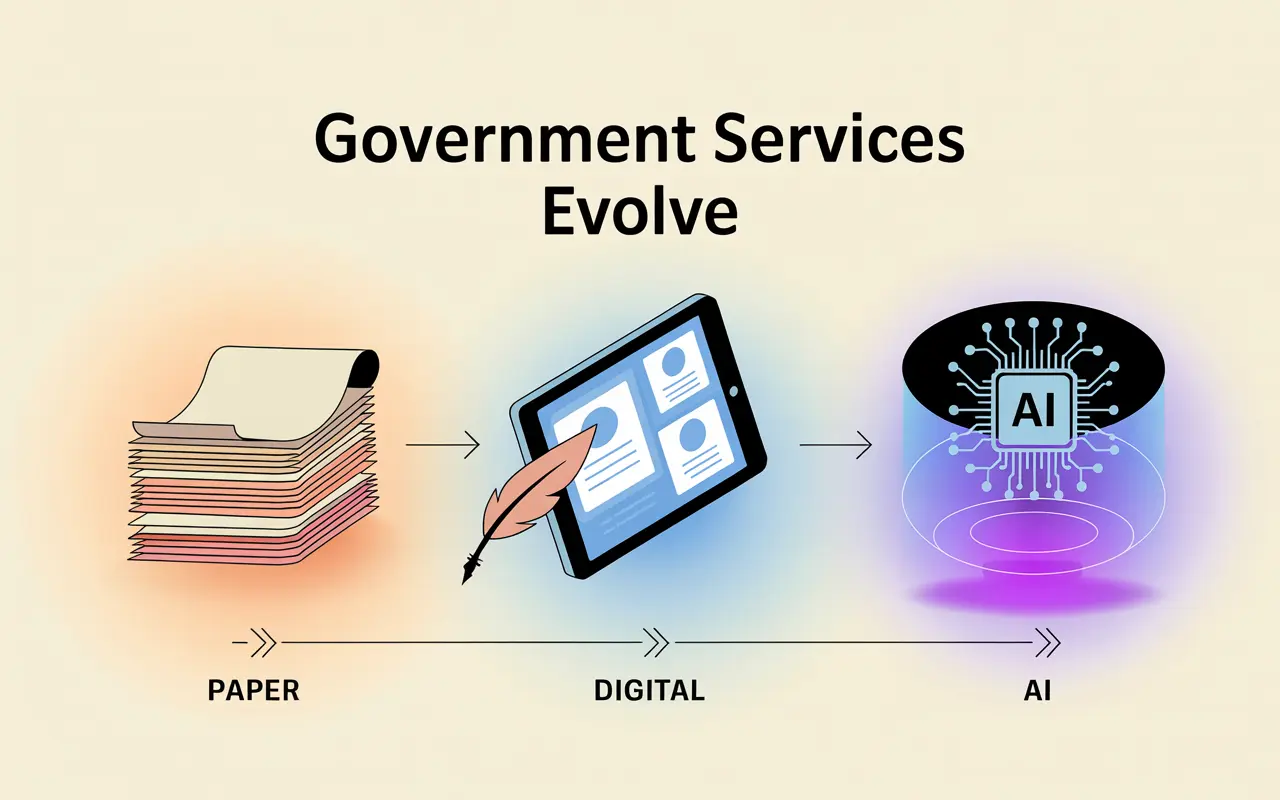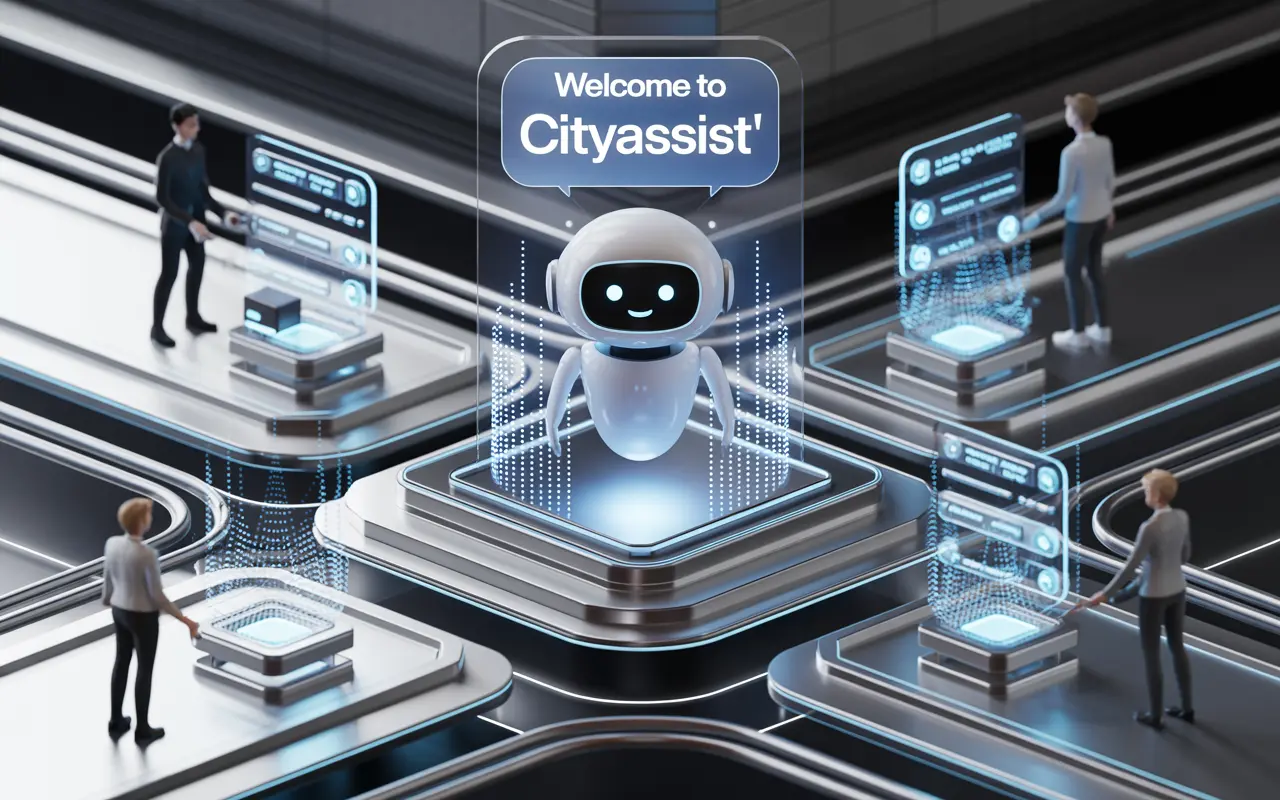Home / Blog / How Technology is Making Government Services More Accessible to Everyone?
From digital IDs to AI-powered chatbots, technology is reshaping how citizens interact with government services. Discover how innovation is breaking barriers, improving access, and driving inclusive governance worldwide.
16 Sep, 2025

Once upon a time, accessing government services meant long queues, mountains of paperwork, and days of waiting. From renewing a license to paying taxes, citizens often faced frustrating delays. But today, technology is rewriting that story.
Governments around the world are embracing digital transformation, making public services faster, smarter, and more accessible. Whether it’s AI-powered chatbots answering citizen queries, mobile apps for tax filing, or blockchain-enabled identity systems, technology is closing the gap between governments and citizens.
According to a World Bank report, more than 130 countries have launched national digital platforms in the last decade. For millions of people, this shift is the difference between exclusion and empowerment.
At 10turtle, we’ve seen how technology-driven solutions in both private and public sectors lead to measurable improvements in efficiency, transparency, and citizen trust.
Quick Summary
For decades, citizens struggled with:
This model excluded rural communities, people with disabilities, and those unable to take time off work.
Now, government services are just a click away. Citizens can:
Example: Estonia, often called the “most digital society,” allows citizens to file taxes in under 5 minutes online.

1. AI-Powered Chatbots & Virtual Assistants
AI is transforming how governments handle citizen queries.
These tools provide instant, round-the-clock support, cutting down wait times and reducing workload for government staff.
At 10turtle, we help organizations deploy AI Development solutions tailored to citizen engagement.
2. Mobile-First Government
In countries where desktops are rare, mobile is the gateway.
Mobile-first platforms bring services to underserved populations and rural communities.
3. Blockchain for Trust and Transparency
Blockchain ensures secure, tamper-proof records.
By leveraging blockchain, governments build trust through transparency a critical factor in citizen confidence.
4. Data Analytics for Smarter Policies
AI and big data allow policymakers to:
Example: The UK’s NHS uses predictive analytics to anticipate hospital admissions, ensuring better planning.
5. Accessibility Tools for Inclusivity
Governments are using technology to make services accessible for citizens with disabilities:
UN research shows that accessible digital platforms can increase participation by 30% among marginalized groups.
Global Examples of Technology in Government

Benefits of Tech-Driven Government
At 10turtle, we’ve observed that when governments integrate web/app development services with AI, they create future-ready citizen experiences.
Challenges and Considerations
Responsible adoption is critical. Governments must design inclusive and secure platforms to avoid widening inequalities.
Future of Accessible Governance
Short-Term (1–3 years):
Mid-Term (3–5 years):
Long-Term (5–10 years):
Conclusion: Building a Citizen-Centric Future
Technology is not just making government services more efficient it’s making them accessible to everyone, regardless of location, ability, or socio economic status.
From AI chatbots answering citizen queries to blockchain securing public records, the future of governance is inclusive, transparent, and digital-first.
At 10turtle, we help governments and enterprises design AI-powered, citizen-centric solutions that drive efficiency and trust.
What’s your take? Do you believe technology can make governments truly people-first?
1. What is GovTech?
GovTech refers to the use of modern technology, especially digital platforms
and AI, to deliver government services more effectively.
2. How is AI used in government services?
AI powers chatbots, predictive analytics, fraud detection, and automated
decision-making for faster citizen support.
3. What is the role of blockchain in
governance?
Blockchain ensures secure, tamper-proof records, boosting transparency in areas
like land registries and digital identities.
4. How do digital platforms improve
accessibility?
They allow 24/7 access, mobile-first solutions, and inclusive tools for people
with disabilities.
5. What are the main challenges for digital
governments?
Digital divide, cybersecurity risks, bureaucracy, and data privacy concerns are
key challenges.